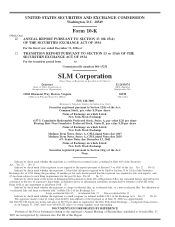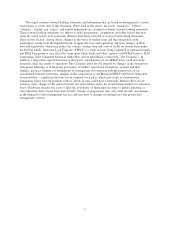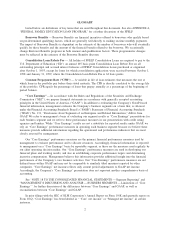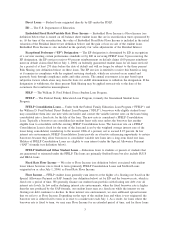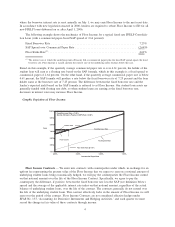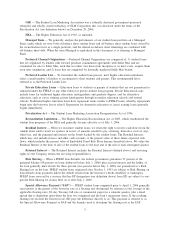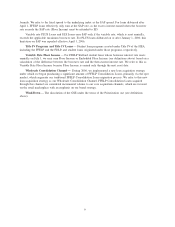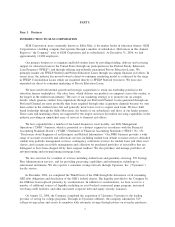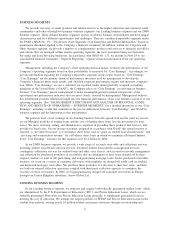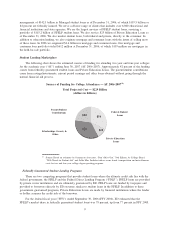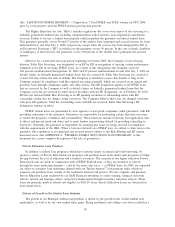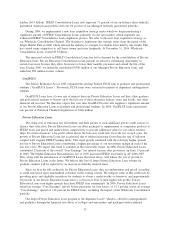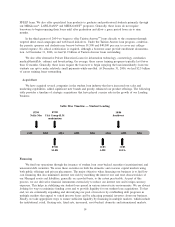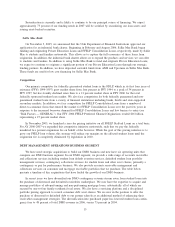Sallie Mae 2006 Annual Report Download - page 6
Download and view the complete annual report
Please find page 6 of the 2006 Sallie Mae annual report below. You can navigate through the pages in the report by either clicking on the pages listed below, or by using the keyword search tool below to find specific information within the annual report.GSE — The Student Loan Marketing Association was a federally chartered government-sponsored
enterprise and wholly owned subsidiary of SLM Corporation that was dissolved under the terms of the
Privatization Act (see definition below) on December 29, 2004.
HEA — The Higher Education Act of 1965, as amended.
Managed Basis — We generally analyze the performance of our student loan portfolio on a Managed
Basis, under which we view both on-balance sheet student loans and off-balance sheet student loans owned by
the securitization trusts as a single portfolio, and the related on-balance sheet financings are combined with
off-balance sheet debt. When the term Managed is capitalized in this document, it is referring to Managed
Basis.
Preferred Channel Originations — Preferred Channel Originations are comprised of: 1) student loans
that are originated by lenders with forward purchase commitment agreements with Sallie Mae and are
committed for sale to Sallie Mae, such that we either own them from inception or, in most cases, acquire them
soon after origination, and 2) loans that are originated by internally marketed Sallie Mae brands.
Preferred Lender List — To streamline the student loan process, most higher education institutions
select a small number of lenders to recommend to their students and parents. This recommended list is
referred to as the Preferred Lender List.
Private Education Loans — Education loans to students or parents of students that are not guaranteed or
reinsured under the FFELP or any other federal or private student loan program. Private Education Loans
include loans for traditional higher education, undergraduate and graduate degrees, and for alternative
education, such as career training, private kindergarten through secondary education schools and tutorial
schools. Traditional higher education loans have repayment terms similar to FFELP loans, whereby repayments
begin after the borrower leaves school. Repayment for alternative education or career training loans generally
begins immediately.
Privatization Act — The Student Loan Marketing Association Reorganization Act of 1996.
Reconciliation Legislation — The Higher Education Reconciliation Act of 2005, which reauthorized the
student loan programs of the HEA and generally became effective as of July 1, 2006.
Residual Interest — When we securitize student loans, we retain the right to receive cash flows from the
student loans sold to trusts we sponsor in excess of amounts needed to pay servicing, derivative costs (if any),
other fees, and the principal and interest on the bonds backed by the student loans. The Residual Interest,
which may also include reserve and other cash accounts, is the present value of these future expected cash
flows, which includes the present value of Embedded Fixed Rate Floor Income described above. We value the
Residual Interest at the time of sale of the student loans to the trust and at the end of each subsequent quarter.
Retained Interest — The Retained Interest includes the Residual Interest (defined above) and servicing
rights (as the Company retains the servicing responsibilities).
Risk Sharing — When a FFELP loan defaults, the federal government guarantees 97 percent of the
principal balance (98 percent on loans disbursed before July 1, 2006) plus accrued interest and the holder of
the loan generally must absorb the three percent (two percent before July 1, 2006) not guaranteed as a Risk
Sharing loss on the loan. FFELP student loans originated after October 1, 1993 are subject to Risk Sharing on
loan default claim payments unless the default results from the borrower’s death, disability or bankruptcy.
FFELP loans serviced by a servicer that has EP designation (see definition above) from ED are subject to one-
percent Risk Sharing for claims filed on or after July 1, 2006.
Special Allowance Payment (“SAP”) — FFELP student loans originated prior to April 1, 2006 generally
earn interest at the greater of the borrower rate or a floating rate determined by reference to the average of the
applicable floating rates (91-day Treasury bill rate or commercial paper) in a calendar quarter, plus a fixed
spread that is dependent upon when the loan was originated and the loan’s repayment status. If the resulting
floating rate exceeds the borrower rate, ED pays the difference directly to us. This payment is referred to as
the Special Allowance Payment or SAP and the formula used to determine the floating rate is the SAP
5

